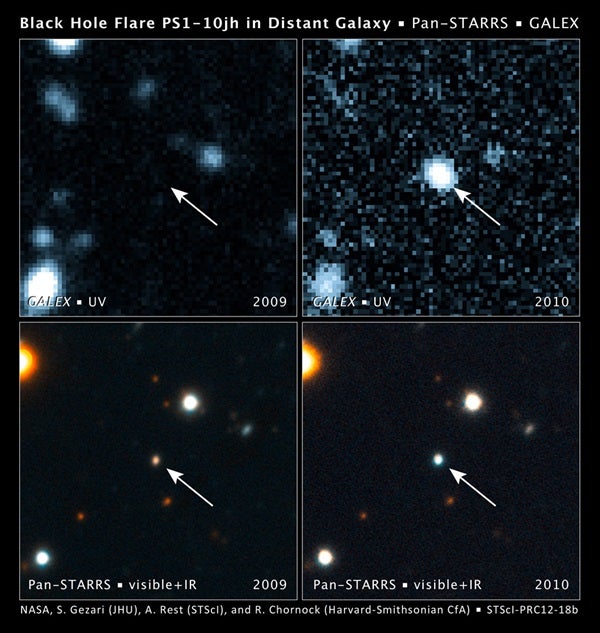The team discovered just such a glow May 31, 2010, using the Pan-STARRS1 Telescope on Mount Heleakala in Hawaii. The flare brightened to a peak July 12 before fading away over the course of a year.
“We observed the demise of a star and its digestion by the black hole in real time,” said Edo Berger from the Harvard Smithsonian Center for Astrophysics in Cambridge, Massachusetts.
The glow came from a previously dormant supermassive black hole at the center of a galaxy 2.7 billion light-years away. The black hole contains as much mass as 3 million Suns, making it about the same size as the Milky Way’s central black hole.
Follow-up observations with the MMT Observatory in Arizona showed that the black hole was consuming large amounts of helium; therefore, the shredded star likely was the core of a red giant star. The lack of hydrogen showed that the star lost its outer atmosphere on a previous pass by the black hole.
“This star barely survived one encounter with the black hole, only to meet its unfortunate end in round two,” said Chornock.
The discovery demonstrates the sleuthing power of the Panoramic Survey Telescope and Rapid Response System (Pan-STARRS), which was designed to locate all kinds of transient phenomena in the night sky.










